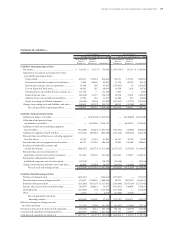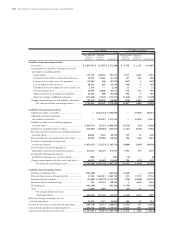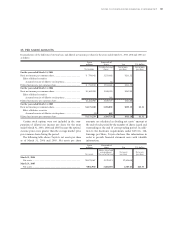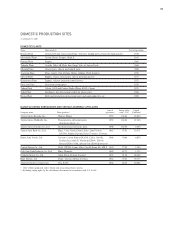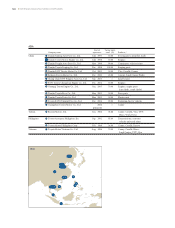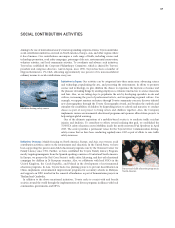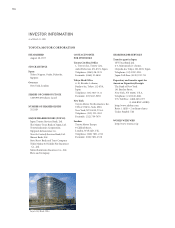Toyota 2005 Annual Report Download - page 130
Download and view the complete annual report
Please find page 130 of the 2005 Toyota annual report below. You can navigate through the pages in the report by either clicking on the pages listed below, or by using the keyword search tool below to find specific information within the annual report.
128
Tree-planting program conducted by
Toyota Shirakawa-Go Eco-Institute
ENVIRONMENTAL PRESERVATION ACTIVITIES
Toyota has long regarded environmental issues as one of its top management priorities. Guided
by our basic management tenet of seeking growth in harmony with the environment, we have
taken steps to develop and popularize technologies that enable the economy and the environment
to coexist.
In 1992, the Company set out guidelines for its environment-related activities in the Toyota
Earth Charter. In the following year, we issued the Toyota Environmental Action Plan to reflect
those guidelines in operations. At present, Toyota is implementing its third such action plan,
which began in 2001, and in April 2006 the Company will roll out initiatives based on the fourth
five-year Toyota Environmental Action Plan. After reconsidering the key environmental issues
that we are likely to face over the medium-to-long term, we organized that new plan around four
overriding issues: Energy / Global Warming, Resource Recycling, Environmentally Burdensome
Substances, and Air Quality. Then, we prepared concrete measures to address those issues for
different operational areas: design and development; purchasing, production, and distribution;
and sales and recycling.
Principal Initiatives: For vehicles, we aim to achieve a sustainable, mobile society by minimizing
harmful exhaust emissions and maximizing fuel efficiency. To those ends, Toyota is steadily pro-
ducing tangible results through the development and marketing of next-generation engines and
exhaust emission reduction systems. Since the Prius was introduced in 1997 as the world’s first
mass-produced hybrid vehicle, we have actively enhanced our hybrid vehicles.
In production, we are doing our utmost to reduce emissions of CO2 and volatile organic
compounds (VOCs) by aggressively introducing production technologies and thoroughly
implementing daily control activities. In fiscal 2005, through the steady implementation of
these measures, we met our objectives for reductions in emissions of CO2 and VOCs in the
painting process.
In 1998, we developed technology for the recycling of materials that are regarded as difficult to
recycle, such as auto shredder residue. In 2003, we initiated the Toyota Recycle Vision, which
seeks the early realization of a 95% vehicle recovery ratio. To achieve that target, we are designing
vehicles that are much easier to dismantle and recycle. Moreover, Toyota is playing a central role
in the operation of the new recycling system created through the enactment of the Automobile
Recycling Law in 2005. For example, we have constructed nationwide systems for information
management and for the collection and recycling of shredder residue, airbags, and various
materials, including chlorofluorocarbons.
Environmental Management: Toyota’s environmental management encompasses every stage of a
vehicle’s life, from development and production through distribution, usage, disposal, and
recycling. In 2005, we introduced Eco-VAS (Eco-Vehicle Assessment System), a comprehensive
environmental evaluation system based on life cycle assessment. Using that system, we will
steadily improve the environmental performance of vehicles by fixing numerical targets at the
outset of all vehicle development processes.
Toyota integrates its environmental preservation efforts with those of subsidiaries in Japan
and overseas based on a consolidated environmental management system introduced in 2000.
We are working to achieve steady reductions in CO2emissions, substances that place a burden
on the environment, waste generation, and water usage. To enhance and reinforce local initia-
tives, in October 2004 we invited 40 overseas environmental managers from 31 work sites in
21 countries to Japan for a training seminar.
* For additional information, please refer to the following web sites:
(Japanese) http://www.toyota.co.jp/envrep05/
(English) http://www.toyota.co.jp/en/envrep05/
Bioplastics pilot plant



